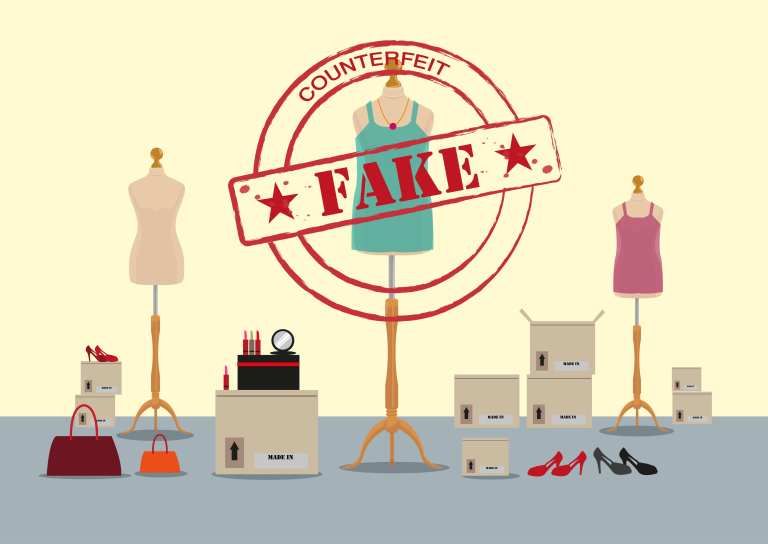Are Online Resale Sites Rife With Counterfeits?

Counterfeiting is stereotypically the domain of luxury goods, where fraudsters dupe unsuspecting shoppers into buying fake handbags, accessories or beauty products. But as with the tainted baby formula scandal a decade ago and more recent vape-related illnesses, possibly due to tampered cartridges, counterfeiting can affect a wide range of products with serious implications.
In the U.S. and worldwide, counterfeiting is a huge business worth between $1.2 trillion and $1.5 trillion annually, according to the International AntiCounterfeiting Coalition (IACC).
The latest Payments and the Platform Economy study examines how marketplaces are responding to the counterfeit threat as well as how they are continuing to innovate the customer experience.
Online Resale
Online resale has become all the rage — even for retailers like Neiman Marcus — from a little bit of everything on OfferUp to fashion-focused Poshmark and high-end The RealReal and 1stdibs.
Sales of counterfeit goods through online marketplaces are expected to hit $1.8 trillion by 2020, which has prompted some online marketplaces to work on resolving fraud repercussions. Online clothing reseller Poshmark recently announcing that it will postpone its initial public offering (IPO) following a data breach that compromised an unknown number of consumers.
According to the 2018 Global Brand Counterfeiting Report, luxury fashion brands are a favored target. Globally, the industry loses $30.3 billion per year to fake online sales. This is revenue drain on brands and has the potential to damage their public image, as well.
In a recent interview with PYMNTS, Maximilian Bittner, CEO of Vestiaire Collective, explained that counterfeits affect less than 0.5 percent of all pieces sold on the site because the company checks submitted product images and once an item is sold, in-house experts physically check the item received from the seller.
These authentication checks must be quick, though, as customers, especially younger ones, have come to expect seamless transactions and fast delivery. “Millennials and Gen Z are driving the growth of the secondhand market and eCommerce, generally. Both are generations that have grown up with technology and feel comfortable using it to purchase products at all price ranges,” he said.
Consignment site Luxury Garage Sale also puts products through a very intensive authentication process. Each piece in the inventory is first inspected by hand, by an expert and/or a GIA-accredited jewelry specialist. Items that don’t pass muster don’t make it onto the site.
“We inspect materials, workmanship, details, any tags, labels, logos, hologram stickers, date and/or serial codes, and identify the time period of each item. Extensive research is then conducted on each item’s style and brand, which includes side-by-side comparisons and critical examination,” said Co-Founder Lindsay Segal in an interview with PYMNTS.
Social Media
Online marketplaces might be an obvious source of potential fraud, but the growing popularity of social commerce is also creating a rise in sales of counterfeit fashion on platforms like Instagram.
According to analytics firm Ghost Data, 20 percent of all fashion posts on the site feature at least one counterfeit item, and the study was able to find at least 50,000 accounts either promoting or directly selling counterfeit goods.
The brands most mentioned by counterfeiters include Gucci (16 percent), Louis Vuitton (12 percent) and Chanel (10 percent). China topped the list of where counterfeiters operate (43 percent of overall counterfeit activity), followed by Russia (30 percent) and Indonesia (13 percent).
The growing scourge isn’t just limited to Instagram or luxury goods. Data from brand protection solution Red Points showed Facebook was increasingly a popular channel for sale of fake football jerseys, with detections quadrupling in just two years.
Solutions
Marketplaces need to approach fraud and counterfeit protection in new ways as cybercriminal and consumer preferences continue to shift. Vestiaire’s Bittner said the company is currently examining how artificial intelligence (AI) and blockchain could improve luxury product authentication. Strong verification procedures are also important as the company expands into new markets like Asia, where shopping and payment preferences may be different.
In July, Amazon announced the expansion of its anti-counterfeiting program called Transparency to Europe, India and Canada. The program works by adding a T-shaped QR-like code to items to serialize them and help to identify when the item is fake, both on Amazon’s side and the buyer side.
This is in addition to Amazon’s Project Zero, an anti-counterfeiting measure that aims to drive counterfeit sales on the site down to zero. The program will hinge on AI technology, machine learning and Amazon’s intellectual property expertise, combining the three to continually scan the site to search and remove violations. To aid in the efforts, brands can provide logos, trademarks and other key data, so Amazon can unleash its digital watchers on 5 billion product listing updates per day.
It’s not always about the platform where buyers and sellers connect. Some payment methods offer stronger protections than others. Visa said that since their inception, chip cards have reduced counterfeit fraud by 87 percent. Counterfeit fraud dollars for all U.S. merchants dropped from September 2015 to March 2019 along with the 825 percent uptick in merchant acceptance of chip cards.